What is Obedience in the Dog World
22.11.2021.
There are different dog sports dog owners and their dogs can participate in. However, one of the most difficult to master and perhaps the most interesting to watch is obedience. If you heard the term describing this dog sport but are unsure what it actually means or represents, you are not alone. Many dog owners heard about it but are not entirely sure what the rules are or how the dogs are scored. If you’re interested in learning a bit more about the sport of obedience, here’s what you should know about it.
What is obedience?
Obedience can have two meanings in the canine kingdom. The first meaning is that a dog listens and behaves in a manner that would deem them obedient. The second meaning is - dog sport. In this article, we will focus on the second thing. Obedience is a dog sport that includes a dog and its handler. The handler has to give preset commands, and the dog has to execute those commands flawlessly.
Obedience is one of the oldest dog sporting events. It dates back to the 1930s, and since then, the sport has become a lot more popular. It is open to everyone. It doesn’t matter if you have a pureblooded dog breed or a mixed dog - everyone can participate. If you believe your dog is talented at this sport, you can take the first step and learn a bit more about the sport.
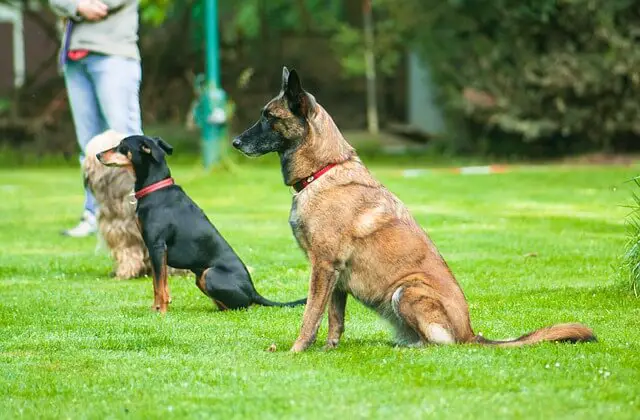
What are the obedience exercises?
One of the most interesting things to see on obedience trials is the precision and coordination between dogs and their handlers. Participants are sharp and well-trained. We can guarantee you that if you decide to check this sport out, you will not regret it. If you’re interested in getting your dog enrolled and make them an obedience competitor, here are the obedience exercises you should teach your dog to perfectly execute;
Heel
Heel is a basic command all dogs have to master if they ever want to be included in competitive obedience. The judge will direct the handler to command their dog to heel. The dog has to walk on the handler’s left side in an attentive manner. This exercise must include a right turn, left turn, about turn, halt, and a fast and slow section.
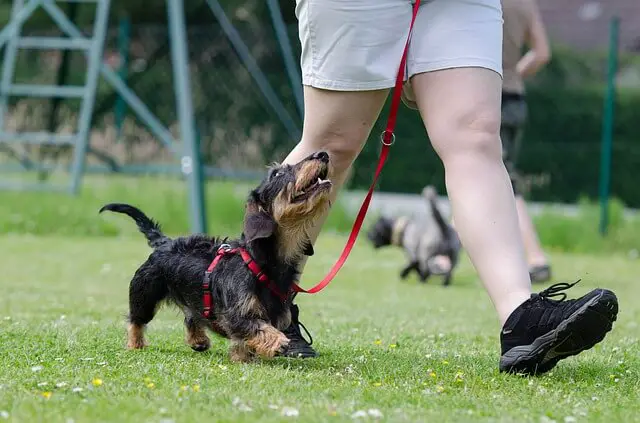
Figure 8
This is pretty self-explanatory. The handler and the dog to heel and walk in figure 8 between obstacles.
Sit
There are different variations of this exercise. These variations and difficulties will depend on the level of the competition. The basic exercise requires the handler to order their dog to sit and move away from the dog. More advanced levels will require the dog to be off-leash, and the handler should move around the ring, out of the ring, or out of the dog’s sight until the judge tells them to return. You can learn how to teach your dog to sit here - How to teach a dog to sit?
Down
The requirements for this exercise are similar to the Sit exercise. The handler has to order the dog to stay in the down position until the judge gives the handler the green light to allow the dog to stand. The judge can ask the handler for different tasks while the dog waits. These tasks will depend on the level of competition.
Recall
The dog has to wait for the handler while the handler walks away from them, turns around, and faces the dog. The handler will tell the dog to come, and the dog has to come close enough that the handler can touch the dog’s head without bending. The exercise finishes when the dog comes into the heeling position and sits.
Drop on recall
This exercise is the same as the recall exercise, but the dog needs to come to the handler and drop (assume the down position).
Stand for Exam
From the heeling position, the handler will tell the dog to stand and wait. After the dog stops, the handler will move about 6 feet. The judge will approach the dog and perform an exam. After the exam, the handler returns, and the dog assumes the heeling position once again.
Broad jump
The broad jump is an interesting exercise. The handler must tell the dog to wait in a sitting position in front of the broad jump. When the handler gives the dog the command, the dog has to jump over an obstacle, make a 180-degree turn, and come in front of the handler.
Retrieve
There are three different retrieve exercises, and all have unique twists the dog has to overcome. The basic idea is the same - retrieve an item. It can be a glove or an obedience-approved dumbbell. The three forms are;
Retrieve on flat
The handler commands the dog to sit and wait while they throw a dumbbell at least 20 feet away. After that, the handler has to tell the dog to fetch. The dog has to grab the item, retrieve it, and sit in front of the handler. The key thing is - the dog can’t play or mouth the dumbbell.
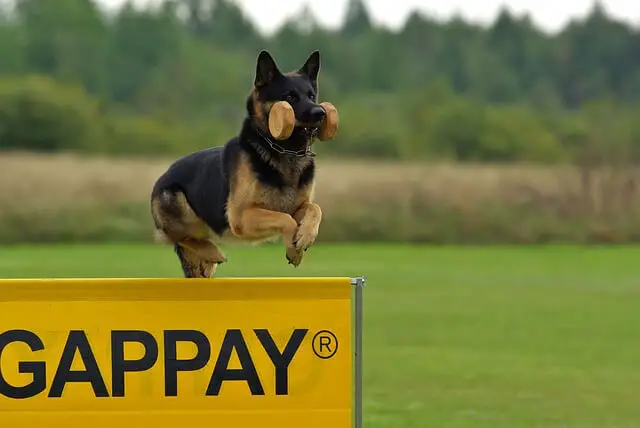
Retrieve over high jump
This exercise is only in “Open Class.” The basic principle is the same as the previous exercise. Still, the difference is that the dog has to jump over an obstacle on their way from the handler. On the way back, the dog also has to jump over the same obstacle.
Directed Retrieve
The dog has to retrieve a specific glove that was placed across the obedience ring. The starting position of the dog and the handler are looking away from the gloves. The judge will tell the handler which glove the dog has to retrieve. The handler will pivot towards the directed glove and command their dog to retrieve it.
Scent discrimination
This exercise includes 10 obedience dumbbells, 5 leather, and 5 metal. The handler will mark one of each with their scent (touching is enough). The judge will place all of them across the ring, and the dog has to retrieve the ones marked by the handler’s scent.
Directed jumping
There will be two sets of jumps placed in the ring. The handler and the dog should stand in a position about 20 feet away from both jumps. The dog has to go to one corner of the ring and wait until the handler orders them to sit in front of them. The dog should jump over the first obstacle and sit in front of the handler. The exercise is repeated with the other jump.
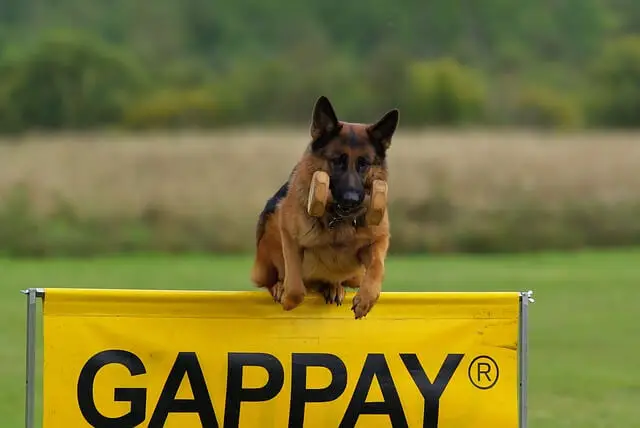
Available obedience titles
After competing and excelling in obedience trials, a dog can earn different titles. They are a great way of showing what kind of dogs a breeder produces. The titles will depend on the cynology association within a country. However, here are the possible titles a dog can earn;
- Companion Dog title from Novice class - For dogs entering obedience. It includes 6 exercises (Heeling on a leash and a Figure 8, Stand for Exam, Heel Free (off-leash), Recall and Group Exercises: a 1-minute sit stay and a 1-minute down stay).
- Companion Dog Excellent title from Open class - For dogs completed the Open obedience class trials. It includes 7 exercises (Heel Free and a Figure 8 (off-leash), a Drop on Recall, Retrieve on Flat, Retrieve over High Jump, Broad Jump, Command Discrimination and Stand, Stay, Get your leash).
- Utility Dog title from Utility class - Dogs can earn this title only after earning the previous two titles. It includes 6 exercises (Signal exercise, scent discrimination (counted as two for metal and leather dumbbell), directed retrieve, moving stand, directed jumping).
- Utility Dog Excellent title - This is a difficult title to ear. To win this, the dog and the handler need to complete both the Open B and the Utility B class at a single trial (usually on the same day). To earn the title, the team has to do that 10 times.
- Obedience Trial Champion - This is a title given by the American Kennel Club. They present it to a team that beats a lot of teams in the competition. There is a scoring chart, and the team has to have at least three prior first places.
In conclusion
Obedience is a dog sport that requires a lot of engagement from the dog and its handler. This is very important for working dogs. However, all dogs could use basic obedience training, even if they are just a pet. It is an excellent way of teaching your dog rules and proper behavior. If you’re interested in this dog sport but don’t know where to start, we advise you to look for your local obedience clubs and start there. They can tell you all about joining, events, training techniques, and other requirements. If you want to start with some basic obedience training, you can do that by checking out this article - Obedience training.
World Dog Finder team

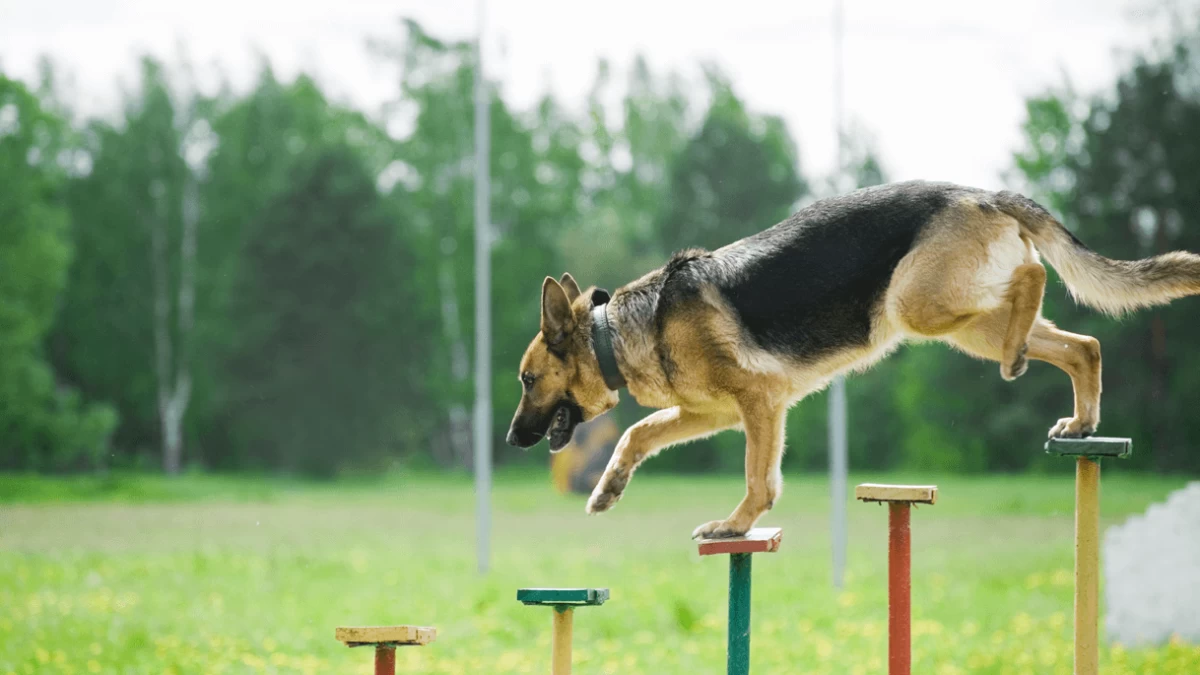

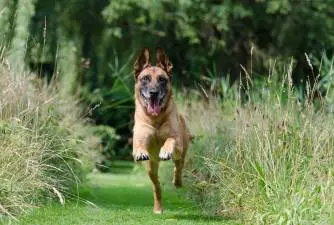
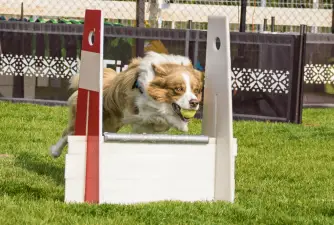
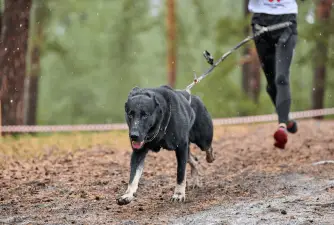
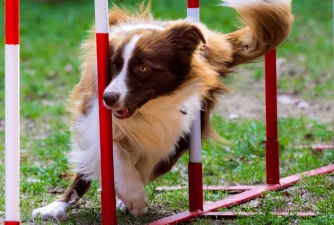

Share